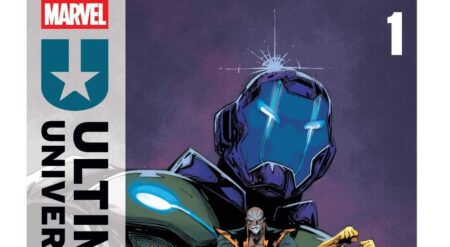
Daredevil #30 is published by Marvel Comics, written by Chip Zdarsky, and penciled by Marco Checchetto and Mike Hawthorne, with Checchetto and Adriano Di Benedetto. Marcio Menyz is the colourist, and Clayton Cowles is the letterer.
Daredevil is still in prison, serving time for the manslaughter of a robber he attacked. Initially safe due to his reputation, Matt Murdock kept himself out of trouble. But got involved in protecting a fellow inmate and was poisoned for his interference. Elsewhere, Elektra has become Daredevil in Matt’s absence, protecting Hell’s Kitchen with her own methods and abilities. She has taken Alice, a young girl she rescued, under her wing, training her. With Daredevil covered for, Matt’s nefarious twin brother, Mike Murdock, poses as Matt to avoid arousing suspicions. And Kingpin decides that this new Daredevil needs taking care of.
Within this issue, Daredevil recovers from his attack in the hospital. He is visited by Foggy, Kirsten, and Cole, the police officer who has recently become his ally. They have brought an FBI agent with them, who starts to give Daredevil an offer that will ultimately shorten his sentence. But whether the guilt-stricken Murdock will accept is a difficult battle. In Hell’s Kitchen. Elektra is continuing to teach Alice to fight. Butch Libris has been tasked with killing the new Daredevil and lures her to a nightclub. And Kingpin invites Typhoid Mary to dinner.
The fantastic structure of the Daredevil comics under Zdarsky continues. The main story for the last few issues has centred on Murdock and his ordeal in the prison. But the attention shifts to Elektra. The three-point of view characters are all still included, but more time is spent with Natchios. Zdarsky utilizes the breadth of his story well, and the shifting of focus works brilliantly within the grand scheme of the series. At least five different threads are being woven simultaneously, so some take priority for a few chapters before another overlaps.
For Matt and Kingpin’s stories, the comic is built around exposition and recovery. This allows the reader to process the intensity of the last issue. The action is reserved for Elektra, and she carries enough for the whole issue. The suspense in the build-up to the fight is fascinating, and when it erupts, it is unrelenting and superb. At the end of the comic, there is a reveal that will violently interrupt every plot thread.
Much of Elektra’s personality is present inside Daredevil #30. First and foremost is her dominance and bravery. She walks straight into the lion’s den, believing herself to be able to take whatever is awaiting her. She plans more than Matt does, wanting to create real change within her new community. The old Daredevil was reactive, always chasing after the new threat. But Elektra wants to control or quell the criminals in the city systematically. The dialogue between her and Butch is fantastic, brimming with disdain for each other.
She is also an unbelievable fighter, which most readers have already known. So it is exhilarating to see her in a fight within this issue that stands as a challenge for her. The battle in the nightclub presents the movements of Elektra and her opponent magnificently. The fight is brutal and makes the reader flinch with each crunching blow.
The art is stunning yet again. Checchetto illustrates Elektra’s story whilst Hawthorne and Di Benedetto depict Matt and Kingpin’s separate scenes. The two art styles are very different, but the strengths of both are made clear as they transition between each other. The clean, thick lines of Hawthorn and Di Benedetto are perfect for intimate indoor settings. In contrast, Checchetto’s busy, thinner lines bring the dirtiness and mystique of the Hell’s Kitchen to life. Both portray fantastic facial expressions as all three main characters face challenging experiences.
Menyz’s colours are absolutely sensational. The colourist creates the nightclub atmosphere, and it is one of the most gorgeous looking scenes in recent comic books. Elektra is surrounded by a purple and blue fog, presented with achingly pretty tones. Daredevil is now primarily silhouetted, with her surroundings murky and difficult to make out anything beyond outlines. The lights are caught in the haze, adding to the disorienting sensation. It truly is a stunning demonstration of colouring in comics.
And yet, the style completely changes to suit Hawthorne’s art better during the scenes with Kingpin and Matt. The rooms are brighter and clearer, but there are alterations to the suggestions of texture. It is a profound revelation of how different artistic partnerships in comics can be.
The lettering by Cowles is sensational at points within this issue. There are moments when the font size changes for dramatic effect, and each time is it incredibly effective.
Daredevil #30 is yet another perfect edition in this run. The story is gripping and bursting at the seams with twists. The three leads, Daredevil, Elektra, and Kingpin, are moving independently of each other. Their individual stories have different themes, pacing, and emotions, and yet they still feel combined. The art is sublime, whether it be presenting an all-out brawl or a simple punch. Elektra’s adventures as Daredevil increase in jeopardy and stakes by the issue. And another addition to the cast might make everything worse for everyone…
Daredevil #30 is available wherever comics are sold.
Daredevil #30
TL;DR
Daredevil #30 is yet another perfect edition in this run. The story is gripping and bursting at the seams with twists. The three leads, Daredevil, Elektra, and Kingpin, are moving independently of each other. Their individual stories have different themes, pacing, and emotions, and yet they still feel combined. The art is sublime, whether it be presenting an all-out brawl or a simple punch.







